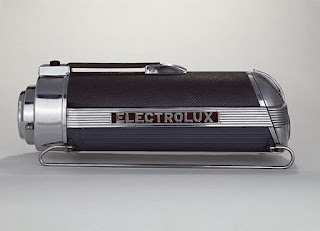
Several towns in New Zealand, including Napier and Hastings, were rebuilt in Art Deco style after the 1931 Hawke's Bay earthquake. It's an amazing snapshot in time. Many of the buildings have been protected and restored. Napier has been nominated for UNESCO World Hritage Site status, the first cultural site in New Zealand to be nominated
Art Deco took its name, short for arts décoratifs, from the Exposition Internationale des Arts Décoratifs et Industriels Modernes held in Paris in 1925. New materials and technologies, especially reinforced concrete, were key to the development and appearance of Art Deco.
At its birth between 1910 and 1914, Art Deco was an explosion of colours, featuring bright and often clashing hues, frequently in floral designs, presented in furniture upholstery, carpets, screens, wallpaper and fabrics.
 The art movement known as Cubism appeared in France between 1907 and 1912, influencing the development of Art Deco. The Cubists, themselves under the influence of Paul Cézanne, were interested in the simplification of forms to their geometric essentials: the cylinder, the sphere, the cone. In the 1920s, travel posters, made for steamship lines and airlines, became extremely popular.
The art movement known as Cubism appeared in France between 1907 and 1912, influencing the development of Art Deco. The Cubists, themselves under the influence of Paul Cézanne, were interested in the simplification of forms to their geometric essentials: the cylinder, the sphere, the cone. In the 1920s, travel posters, made for steamship lines and airlines, became extremely popular.
By the 1930s, the style had been somewhat simplified, but it was still extravagant.
 American skyscrapers marked the summit of the Art Deco style; they
became the tallest and most recognizable modern buildings in the world. New York City's skyline was radically changed by the Chrysler Building in Manhattan (completed in 1930). The Chrysler Building was soon surpassed in height by the Empire State Building (1931), in a slightly less lavish Deco style. These two buildings plus other Art Deco ones tofollow completely changed New York City's skyline.
American skyscrapers marked the summit of the Art Deco style; they
became the tallest and most recognizable modern buildings in the world. New York City's skyline was radically changed by the Chrysler Building in Manhattan (completed in 1930). The Chrysler Building was soon surpassed in height by the Empire State Building (1931), in a slightly less lavish Deco style. These two buildings plus other Art Deco ones tofollow completely changed New York City's skyline.
 After World War II the style largely vanished, except in
industrial design, where it continued to be used in automobile styling
and products such as jukeboxes and certain household items, reflecting a more modern feeling for luxury.
After World War II the style largely vanished, except in
industrial design, where it continued to be used in automobile styling
and products such as jukeboxes and certain household items, reflecting a more modern feeling for luxury.

After the First World War, Art Deco buildings of steel and reinforced concrete began to appear in large cities across Europe and the United States. In the United States the style was most commonly used for office buildings, government buildings, cinemas, and railroad stations. Many of the best surviving examples of Art Deco are cinemas built in the 1920s and 1930s. In the late 1930s, a new variety of Art Deco architecture became common; it was called Streamline, or, in France, the Style Paquebot, or Ocean Liner style. Buildings in the style had rounded corners and long horizontal lines; they were built of reinforced concrete, and were almost always white; and they sometimes had nautical features, such as railings and portholes that resembled those on a ship.
Most of these Art Deco elements can be seen in Napier's public buildings and residential homes of the period. Check out the horizontal stripes, arches, floral details. rounded corners, geometric details.
The street signs are in the Broadway font to suggest Art Deco styling such as was used in concert posters.

The detail on the doors is wonderfully botannical. It fits so well with the other deco elements. Who would have thought geometric designs and flowing florals could work so well together?

There are buildings, both residential, civic and industrial, scattered around New Zealand in this very distinctive style but nowhere but Napier and Hastings is there such a concentration that the cities are famous for this style of architecture. And the fame is well deserved.
Not all the homes are well maintained but most are.
The archways and other structures along the esplanade display a subtle use of Art Deco elements. Also evident in Napier is a particular style of Art Deco I had been unaware of and that's the 'Spanish' influence. Several buildings on the main streets reflect this. Check out the photos below and see how many elements of Art Deco style you can now identify.





















0 comments:
Post a Comment
I welcome your comments, contributions and feedback.